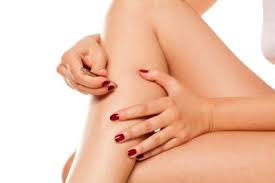Ingrown hairs are a frustrating skin issue that many people experience, especially after shaving or waxing. If you’ve been wondering, “How do I get rid of ingrown hair on my legs?” {كيف اتخلص من الشعر تحت الجلد في الساقين}, you’re not alone—and you’ll be happy to know there are natural, effective ways to both treat and prevent them. With the right home remedies and daily habits, you can enjoy smoother, healthier legs without harsh chemicals or expensive products.
Here’s everything you need to know to naturally tackle ingrown hairs at home.
What Causes Ingrown Hairs on Legs?:
Understanding the cause is the first step to solving the problem. An ingrown hair forms when a hair curls back or grows sideways into the skin, leading to red bumps, inflammation, and sometimes infection.
Common causes include:
- Shaving with dull razors
- Tight clothing that irritates the skin
- Dead skin cells clogging hair follicles
- Naturally curly or coarse hair types
- Lack of proper exfoliation
Addressing these root causes is essential for both treatment and prevention.
Natural Remedies to Treat Ingrown Hairs at Home:
Nature provides some excellent ingredients that are gentle on the skin while helping to calm inflammation and release trapped hairs.
Try these effective natural solutions:
- Warm compress: Softens the skin and opens pores, making it easier for the hair to break through.
- Aloe vera gel: Soothes redness and helps skin heal faster.
- Tea tree oil (diluted): Has antibacterial and anti-inflammatory properties.
- Apple cider vinegar: Acts as a natural exfoliant and prevents infection.
- Baking soda paste: Gently exfoliates and reduces irritation.
Use these treatments 1–2 times daily until the ingrown hair disappears.
Gentle Exfoliation for Prevention and Treatment:
Exfoliating your skin removes dead cells that can trap hairs beneath the surface. Natural exfoliants are a great way to keep skin smooth without causing damage.
Recommended exfoliation methods:
- Sugar scrub: Mix sugar with coconut oil to gently exfoliate and moisturize.
- Oatmeal paste: Soothes sensitive skin while lightly buffing away debris.
- Coffee grounds: Improve circulation and remove dead skin layers.
Exfoliate 2–3 times a week for the best results—avoid overdoing it, as that can lead to irritation.
Natural Shaving Tips to Prevent Ingrown Hairs:
How you shave plays a major role in whether you develop ingrown hairs. Making a few simple changes can significantly reduce your chances.
Follow these natural shaving techniques:
- Always wet the skin: Shave during or after a warm shower.
- Use a natural shaving cream or oil: Olive oil or aloe vera gel provide smooth glide.
- Shave in the direction of hair growth: Reduces the chance of hair curling back.
- Use a clean, sharp razor: Change blades regularly to avoid skin trauma.
- Rinse with cool water: Helps close pores and calm the skin post-shave.
Consistent, gentle shaving keeps your skin less reactive and more resistant to bumps.
Daily Natural Skincare Habits to Prevent Ingrowns:
Prevention is a long-term process that begins with your daily routine. By keeping your skin healthy and hydrated, you create an environment where ingrown hairs are less likely to form.
Add these habits to your daily regimen:
- Moisturize with plant-based oils: Jojoba, almond, or shea butter nourish and soften the skin.
- Dry brush before showering: Stimulates circulation and removes buildup.
- Wear breathable clothing: Reduces friction that can lead to irritation.
- Hydrate from within: Drink plenty of water to maintain skin elasticity.
Healthy skin naturally resists blockages and irritation, lowering your risk of ingrown hairs.
DIY Ingrown Hair Spray with Natural Ingredients:
You can make a simple, soothing spray at home to use after shaving or waxing.
Ingredients:
- 1/2 cup witch hazel
- 10 drops tea tree oil
- 5 drops lavender essential oil
- 1/4 cup rose water
Instructions:
- Mix all ingredients in a spray bottle
- Shake well before use
- Spray onto clean skin after shaving
This blend helps disinfect, calm, and hydrate the skin, making it less likely for ingrown hairs to form.
When to Seek Professional Advice:
While natural remedies work for most people, some cases may require medical attention. Don’t hesitate to consult a dermatologist if you’re experiencing severe or recurring ingrown hairs.
Warning signs include:
- Painful, swollen bumps with pus
- Signs of skin infection
- Scarring or pigmentation from repeated irritation
- Ingrown hairs that don’t resolve after home treatment
A professional can offer options like topical creams, exfoliants, or laser hair removal if needed.
Final Thoughts:
If you’ve been asking, “How do I get rid of ingrown hair on my legs?”, know that nature has powerful tools to help you. By combining proper exfoliation, gentle shaving habits, and plant-based skincare, you can treat and prevent ingrown hairs safely at home.
Stay consistent with your routine, be kind to your skin, and you’ll soon enjoy legs that feel as smooth as they look—naturally.

